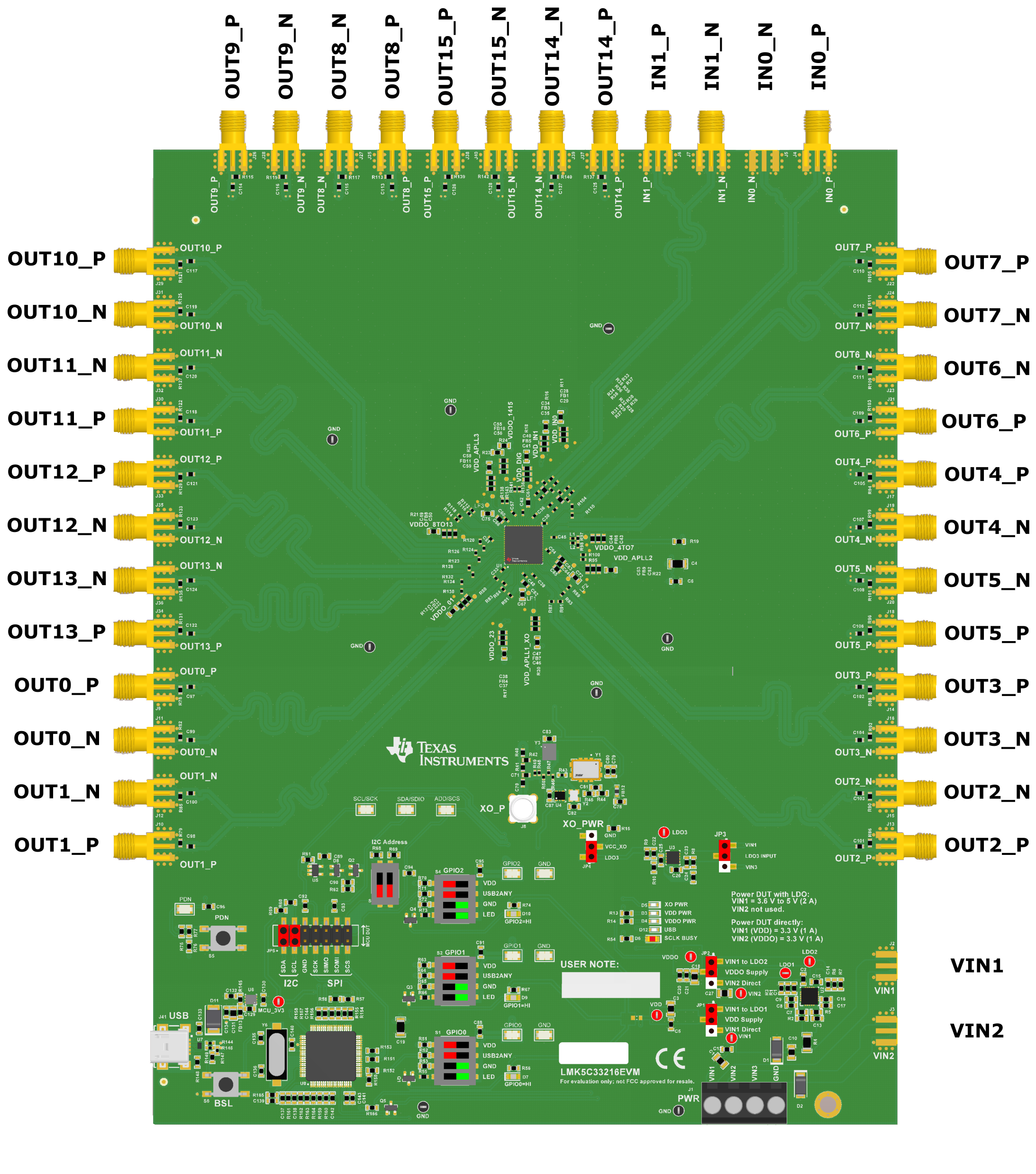SNAU260A October 2020 – February 2021 LMK5C33216
ADVANCE INFORMATION
- Trademarks
- 1Introduction
- 2EVM Quick Start
- 3EVM Configuration
-
4EVM Schematics
- 4.1 Power Supply Schematic
- 4.2 Power Distribution Schematic
- 4.3 LMK5C33216 and Input Reference Inputs IN0 to IN1 Schematic
- 4.4 Clock Outputs OUT0 to OUT3 Schematic
- 4.5 Clock Outputs OUT4 to OUT9 Schematic
- 4.6 Clock Outputs OUT10 to OUT15 Schematic
- 4.7 XO Schematic
- 4.8 Logic I/O Interfaces Schematic
- 4.9 USB2ANY Schematic
- 5EVM Bill of Materials
- 6Appendix A - TICS Pro LMK5C33216 Software
- 7Revision History
1 Introduction
Overview
The LMK5C33216EVM is an evaluation module for the LMK5C33216 Network Clock Generator and Synchronizer. The EVM can be used for device evaluation, compliance testing, and system prototyping. The LMK5C33216 integrates three Analog PLLs (APLL) and three Digital PLLs (DPLL) with programmable loop bandwidth. The EVM includes SMA connectors for clock inputs, oscillator inputs, and clock outputs to interface the device with 50-Ω test equipment.
The onboard TCXO allows the LMK5C33216 to be evaluated in free-running, locked, or holdover mode of operation. The EVM can be configured through the onboard USB microcontroller (MCU) interface using a PC with TI's TICS Pro software graphical user interface (GUI). TICS Pro can be used to program the LMK5C33216 registers.
Features
- LMK5C33216 DUT
What is Included
- LMK5C33216EVM
What is Needed
- Windows PC with TICS Pro Software GUI
- Test Equipment
- DC power supply (5 V, 2 A)
- Real-time oscilloscope
- Source signal analyzer
- Precision frequency counter
- Signal generator / reference clock
In Figure 1-1, jumper position is shown by the red markings. Dip switch positions are shown be either a green box (for ON) or red box (for OFF) in the appropriate location.
 Figure 1-1 LMK5C33216EVM Default Setting of Jumpers and Dip
Switches
Figure 1-1 LMK5C33216EVM Default Setting of Jumpers and Dip
Switches